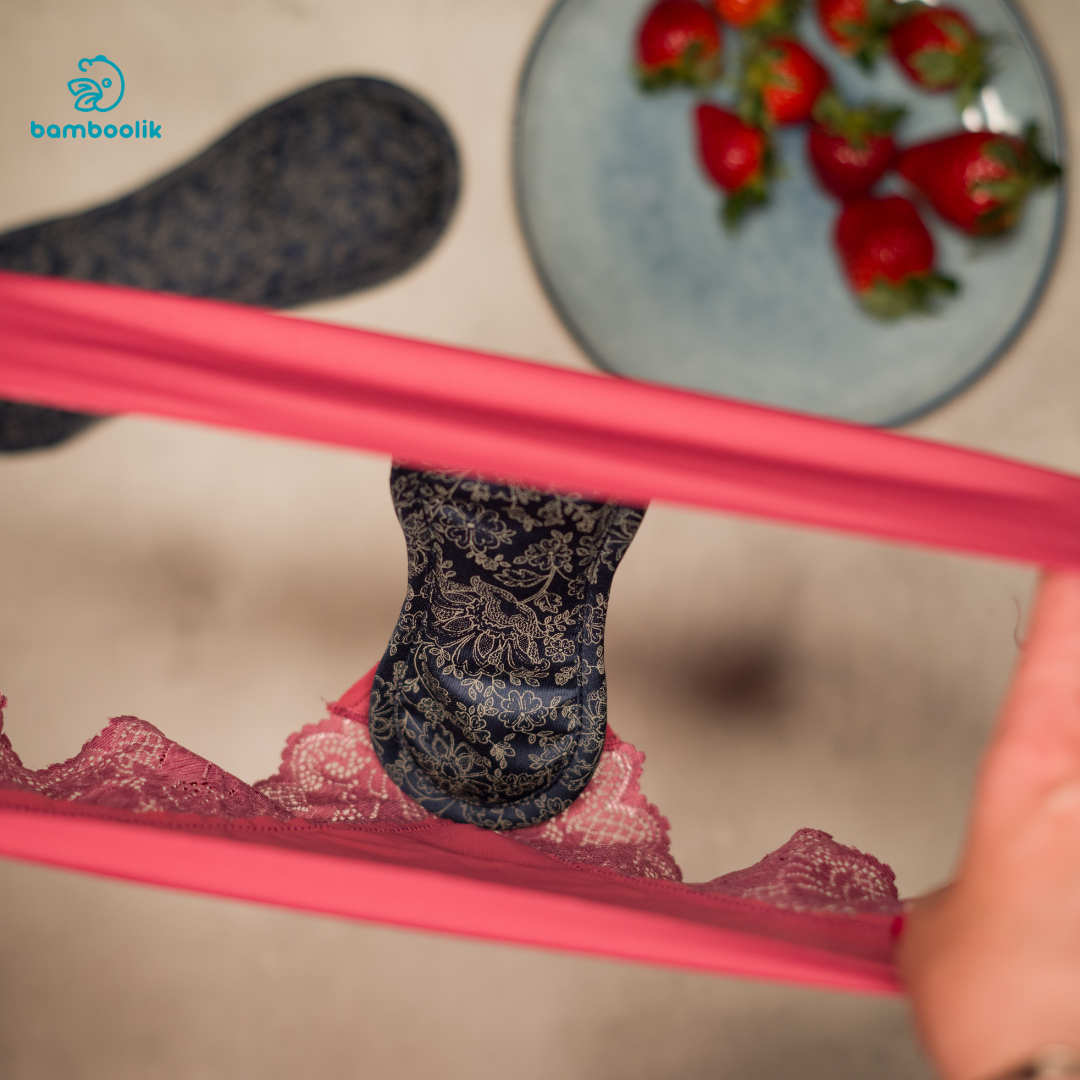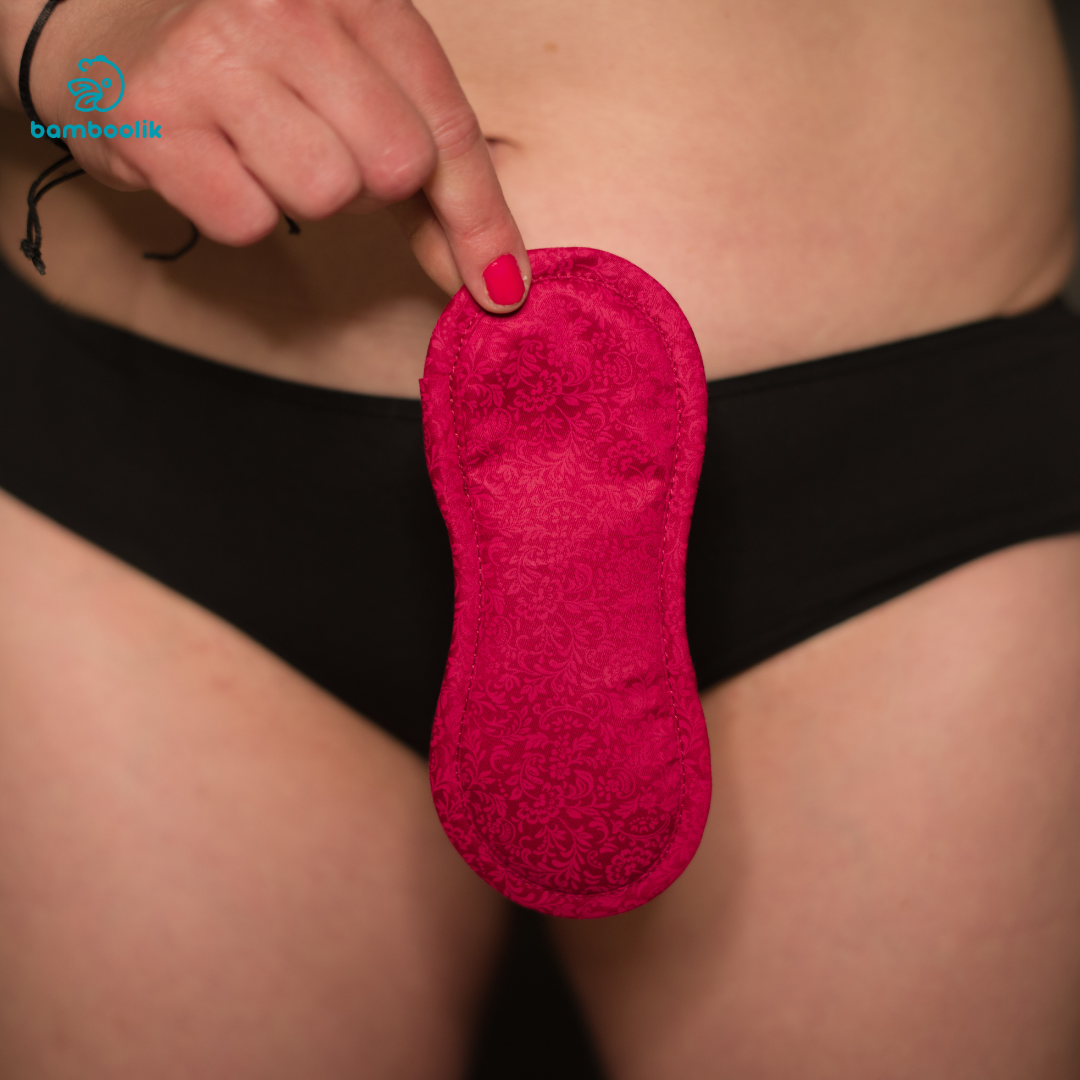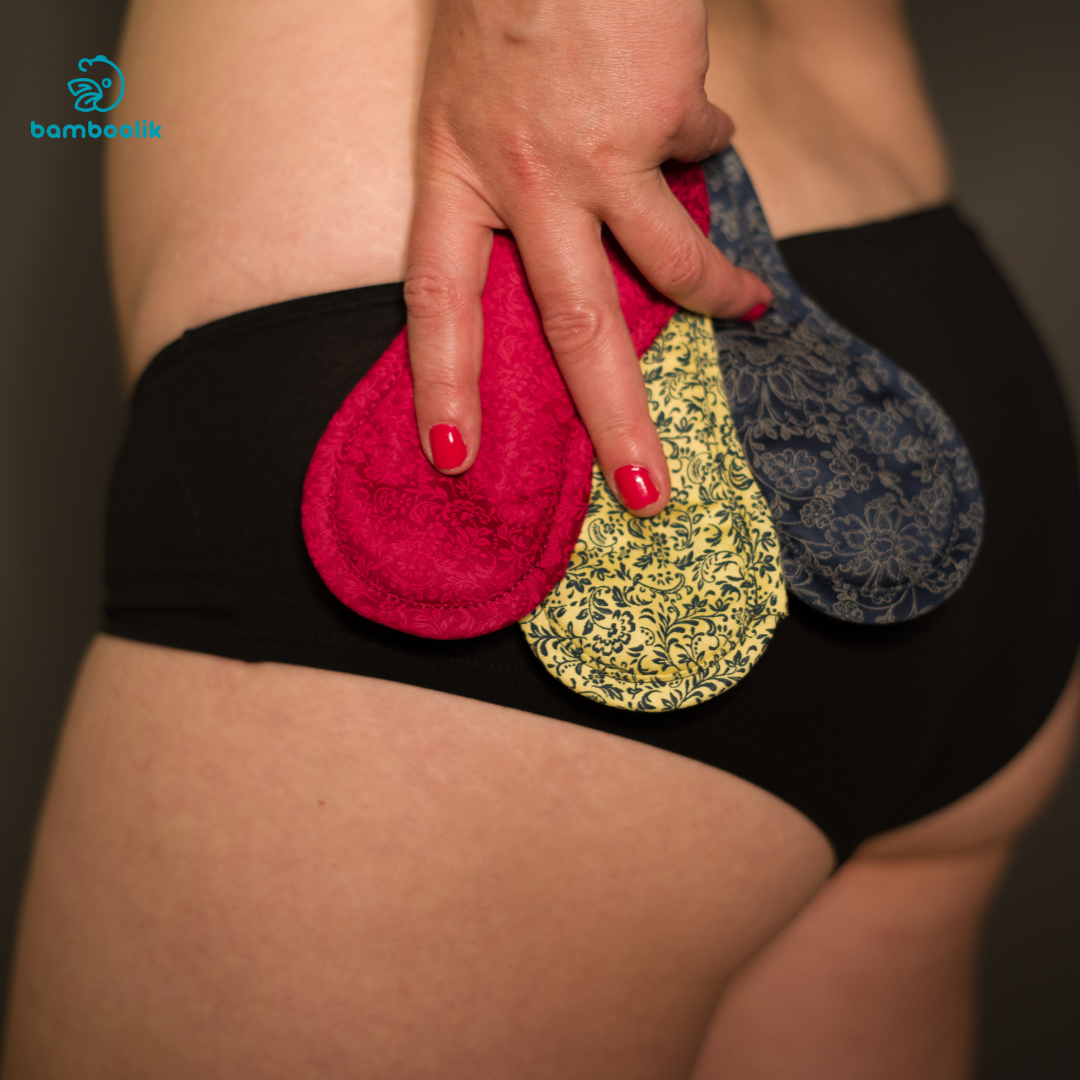How to wash reusable sanitary pads, overnight pads or panty liners?
Eco-friendly period?
Yes, please! Preferably with reusable sanitary pads. That is if your prefer „external“ menstrual items. (In case you prefer „internal“ menstrual items, have a look at our menstrual cup, it’s a gamechanger!)
Cloth sanitary pads are better than their disposable counterparts in many ways – they’re more breathable (good-bye, repeated infections!), they save the environment AND your money (no need to literally throw away your money every month), they‘re absolutely reliable (sanitary pads and overnight / maternity pads have a waterproof layer).
Using cloth sanitary pads is pretty self-explanatory, just put them in your underwear (Printed side up, please! In case of our organic cotton terry pads the right side up is the one with no fleece or PUL layer). And you wash them after use.

What comes next? How to wash reusable pads and not make it too complicated?
This is where the fun starts J We mean, we understand that for someone used to disposable pads, the washing part might feel a little…. odd. And one certainly has question about it. Like: Isn’t it a little gross to store bloody pads for days? Does the blood wash off, doesn’t it leave spots?
We understand your concerns! We had them, too. So we tested all the storing and washing options and can tell what works for us!

So. How to wash cloth sanitary pads effectively, without too much effort?
This is how we do it:
- We wash cloth sanitary pads the fourth of fifth day of our cycle (at the very least). That might be the end of your cycle (those of you who are more fortunate :-)), or it could mean washing your pads in the middle of the cycle and then again at the very end.
- That applies for overnight / maternity pads, too. The postpartum period is slightly specific—in the first one or two weeks after childbirth, the bleeding is quite heavy. That might result in having to wash your pads more often than the recommended 4 days. (And, in our book, it’s absolutely fine NOT to do that, just rest and use disposable maternity pads. Giving yourself a break won’t cause an environmental crisis.) In the remaining week of the postpartum period, the bleeding resembles very much a standard period (you may even be happy with using a regular sanitary pad), so washing after approximately 4 days is sufficient.
- We store our cloth pads always without water! We keep them in either a bin or in one of our PUL wetbags (waterproof but breathable). We make sure fresh air gets to the used pads – so we never keep them folded and shut airtight. If we did, the blood wouldn’t dry and that might trigger some decaying processes that you don’t to initiate :-)
- Before we wash our pads, we soak them in COLD water (sometimes we add a pinch of salt in it). This part is absolutely necessary! Blood has haemoglobin in it which, if put in warm water, releases and stains your pads for good (and these stains won’t come off no matter what you do). Ideally, put your pads in ice cold water overnight (or a few hours at least).
- After soaking, we don’t hand wash our pads! We pour out the water that the pads were being soaked in and we put our pads straight to the washing machine. If you want (if 100% stainless pads are your goal), put a little bit of soap on any stains you don’t like. No rubbing! Just let the soap sit for a while (5 mins is enough) and then turn on the washing machine.
- Choose a longer washing programme on your washing machine and 60°C. You can add other items to your pads (like towels, tissues and other laundry you wash at 60°C). Cloth pads at this point are free of any organic residues and won’t stain anything.
- Reusable sanitary pads can be tumble dried. (For those who have cloth diapers experience and therefore are aware that PUL fabric should not be tumble dried: That is still true but: You wash and dry your pads roughly 12 times a year whereas diapers are washed more like 12 times a month. Tumble drying Diaper Covers or Pocket Diaper so often might cause damage to the delicate PUL fabric; reusable pads are washed so much less frequently that it won’t hurt them.) We’d just recommend adjusting the pads’ shape after you take them out of your tumble dryer, let them cool for a little while and they’re ready for your next cycle.
- Our sanitary pads should not be ironed - the waterproof PUL layer could be damaged. After drying, it is enough to pull the pads to the sides and smoothen them, and they will be nice and flat again.
That’s it! No rocket science, is it?
Finally, we thought we might answer some frequently asked questions and assumptions about cloth sanitary pads.
- „I think it’s gross! Used pads will definitely smell bad after a while, there’s blood on them after all and you store them in your bathroom for days, yikes!
- Our answer: If your menstrual blood has a bad smell, make an appointment with you gynaecologist ASAP! Menstrual blood of a healthy woman shouldn’t have an odd smell, it may have a very gentle „iron“ odour to it, like any other blood. When it’s dry, you shouldn’t smell it at all. If you have a nosebleed and stain your shirt as a result (or your face mask, currently J), it also doesn’t smell awful, does it? Just make sure air can get to your pads waiting to be washed and you’re safe.
- Can I store reusable pads in water?
- Our answer: We wouldn’t recommend it. It is doable (unlike cloth diapers that should NEVER EVER be stored in water), but…. there’s a but! You’d need to change the water every day, in summer more like twice a day otherwise the water would not be cold enough. And it’s still risky – especially in warm weather, blood residues and lukewarm water might create a new life in your pads and you don’t want to support that. That’s why we recommend storing your pads dry (without water).
- Can I replace the soaking with a short programme in my washing machine?
- Our answer: Even if your washing machine has a short programme on cold water (which is crucial), we wouldn’t recommend it. For two reasons. The water probably won’t be cold enough and the time your pads will spend actually being soaked won’t most likely be long enough. Pads need hours to soak.
- What detergent should I choose for washing cloth sanitary pads?
- Our answer: Any detergent you like! Preferably one that doesn’t cause any skin irritations to you. A detergent without perfumes for example.
- There are unsightly spots at my pads! I pre-soak them in cold water and everything and still, they’re spotty. How to have them spotlessly clean?
- Our answer: This might happen, unfortunately. It might help to know that the spots are just colouration, they’re not dirt! It’s just haemoglobin that is responsible for the colouration. What could help: Add some sodium percarbonate to your pads when you wash them or soak your cloth sanitary pads in sodium percarbonate before you wash them. (Put your cloth pads in a bin, sprinkle them with sodium percarbonate, add hot water – almost boiling – and watch. Bubbles will appear and the entire cocktail will rise, so make sure you place your bin somewhere where you don’t mind it overflowing – like your bath or your shower. Let it cool and then wash your cloth pads as usual.) Direct sunlight also helps with spots – instead of tumble drying your pads, try letting them airdry outside, in the sun. And in case you know you would mind the spots (even when you know they’re nothing unhygienic, just some leftover colouration), we’d recommend buying dark pads that mercifully hide everything :-)
Have we answered all your questions? In case not, feel free to contact us! Either on our Hotline or our social media. We’re here for you!


